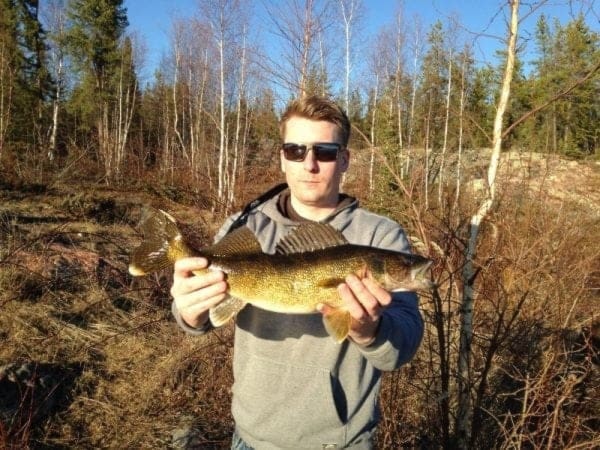One of my most vivid memories growing up in Yellowknife is driving by Giant Mine in the backseat of the family car and my father ominously pointing to the stream that flowed past it.
“Baker Creek,” he announced. “It's one of the most contaminated streams in all of Canada. The arsenic there will peel your skin off.”
To reinforce the point, upon returning home my father pulled out a government report with a picture inside showing a pair of badly blistered feet. I doubted even then that the unfortunate arsenic victim had fried his feet wading through Baker Creek but the photo made an impression nonetheless. And it was an easy one to make.
Giant Mine looked like a haunted house long before labour strife, murder and arsenic sunk its legacy. It smelled of sulfur and the constant chugging of the cacophonous mill house was a fitting soundtrack for the sinister image of an industrial scale mine site.
In any event, we stayed far clear of Baker Creek when I was a kid. Kam Lake also had a dubious reputation but not quite as dire. Grayling used to run up the culvert connecting Kam and Grace Lake in spring so it was a fun place to visit – contamination fears be damned.
Frame Lake, which according to the Department of Health and Social Services has arsenic levels above 100 parts per billion, or more than 10 times higher than Health Canada guidelines for safe drinking water, was the primary stomping grounds for all the children in my neighbourhood growing up. No doubt arsenic levels were even higher back then.
We built sandcastles on the beach, turned over rocks in the water in search of leeches and got just plain filthy wading in the muck – usually in our bare feet.
And then, of course, there was the fishing. Over the past 40 years I've fished and in many cases, eaten fish from, just about every fishable body of water within 30 kilometres of Yellowknife.
A friend of mine recently texted me to say somebody from the Department of Environment and Natural Resources had warned him not to eat fish from Martin Lake. Far too late for me I'm afraid. I've eaten countless fish from Martin Lake.
I'm not sure where this person got his information but according to the department's website, while the water might not be good enough to drink, the fish at least are passable.
Seems to me there is a lot of confusion and misinformation out there concerning arsenic in our lakes. Everyone is aware of all the arsenic buried beneath Giant Mine. But now that it is certain at least some of the arsenic blown out of the mine's roaster over the 50 years the mine was in operation hadn't simply washed away to sea like many had hoped, people are starting to freak out a little.
This was particularly evident last year when researchers with the University of Ottawa released a report describing elevated, even dangerous levels of arsenic in 25 “lakes” close to Giant Mine. This followed another scientific report unveiled the previous fall showing arsenic levels – mostly good, some, like Frame Lake, not so great – in other lakes within 30 kilometres of the mine.
Unfortunately, several media outlets went overboard with this story, glossing over an important detail concerning the University of Ottawa study – namely, that the lakes in question are tiny, not even really lakes at all but fringe potholes no one in their right mind would want to visit, let alone swim in or try fishing in them.
Nonetheless, that didn't stop headlines like this: “Arsenic Warning: Fishing, Swimming Off-Limits in Several Yellowknife Lakes.”
It didn't help either that health officials here didn't seem to realize there were no fish to be had in any of these 25 lakes and the most one could likely accomplish in these bodies of water, as opposed to swimming, was wallow around like a hog in a kiddie pool filled with mud. Never mind that one would have to trek into mosquito-blighted forest (because there are few trails that get near them) and the worst lakes are closest to either the mine or the dump.
I'm not discounting any of this research. It has allowed the health department to present a helpful advisory that colour-codes lakes near Yellowknife to their relative arsenic levels and advises accordingly.
It's just galling me that after all these years playing in mud, eating fish, the government has finally come around to doing it. There are many people, I'm sure, who would have appreciated this information while the mines were still operating.
Hopefully, the warnings and headlines are scarier than reality.
